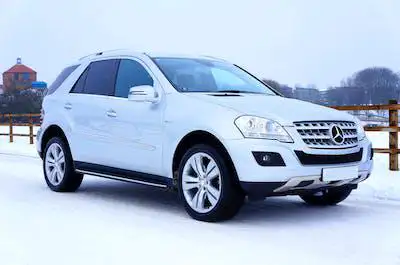Step 1: Chart Your Course - Defining Your Needs and Priorities
Before diving into a sea of price tags, it's vital to have a clear roadmap of your priorities. Ask yourself:
What is your budget? Be realistic and factor in not just the sticker price, but also insurance, maintenance, and fuel costs.
What type of SUV are you seeking? Compact, mid-size, or full-size? Each caters to different needs and budgets.
How many passengers will you typically carry? Consider interior space and seating configurations.
What are your driving habits? City commutes, highway cruising, or off-road adventures? Fuel efficiency and performance capabilities vary vastly.
What features are essential? Prioritize must-haves like safety technology, driver assistance features, or entertainment systems.
Once you have a firm grasp of your needs, you can set realistic parameters for your price comparison.
Step 2: Gather Your Intel - Online Resources to the Rescue
The internet is your ultimate ally in the price comparison quest. Utilize car-buying websites like Edmunds, Kelley Blue Book (KBB), and Cars.com. These platforms offer:
Side-by-side comparisons: View specs, features, and prices of multiple SUVs simultaneously.
Dealer listings: Find local SUV inventories with current MSRP and potential discounts.
Used car listings: Explore pre-owned options if your budget is tighter.
Pricing tools: Estimate a fair market value for any given model based on mileage, condition, and location.
Expert reviews: Gain insights on performance, reliability, and overall value.
Remember, online prices may not always reflect actual dealer negotiations. Use online resources as a starting point and prepare to haggle in person.
Step 3: Decipher the Price Code - Understanding the Numbers Game
MSRP (Manufacturer's Suggested Retail Price) is the baseline, but the real deal happens with negotiations and incentives. Pay attention to:
Invoice price: This is what the dealer pays for the car, and it can be a starting point for your negotiation.
Rebates and incentives: Manufacturers often offer cash back, financing deals, or loyalty discounts. Factor these into your final price calculations.
Optional packages and add-ons: These can significantly inflate the price. Choose wisely and stick to your must-have features.
Financing options: Shop around for the best interest rates. A lower rate can offset a slightly higher upfront price.
Step 4: Go Beyond the Numbers - Factor in the Intangibles
While price is crucial, don't overlook other factors that contribute to long-term value:
Reliability and safety: Research crash test ratings and reliability data from sources like Consumer Reports. A reliable SUV saves you money in the long run.
Warranty coverage: Compare warranty lengths and terms to ensure you're adequately protected.
Ownership costs: Consider factors like fuel efficiency, maintenance costs, and resale value.
Test drive!: This is essential to assess comfort, performance, and overall satisfaction.
Step 5: Seal the Deal with Confidence - Negotiating Like a Pro
Preparation is key for a successful negotiation. Arm yourself with research, know your target price, and be willing to walk away if the deal isn't right. Be friendly, assertive, and avoid emotional decisions. Consider:
Starting below your target price: Leave room for negotiation.
Highlighting competing offers: Use research to leverage better deals from other dealerships.
Focusing on the total cost of ownership: Factor in not just the price, but financing, insurance, and maintenance.
Being patient and persistent: Negotiations can take time and effort.
Bonus Tip: Think Outside the Box:
Consider certified pre-owned vehicles: You can get a reliable SUV at a significant discount compared to new models.
Explore leasing options: Leasing might be a good option if you prioritize a newer model and lower upfront costs.
Don't be afraid to negotiate private sales: With research and caution, you can find great deals on used SUVs.
Remember, comparing SUV prices is a journey, not a race. By prioritizing your needs, utilizing smart resources, and negotiating effectively, you'll find the perfect SUV

